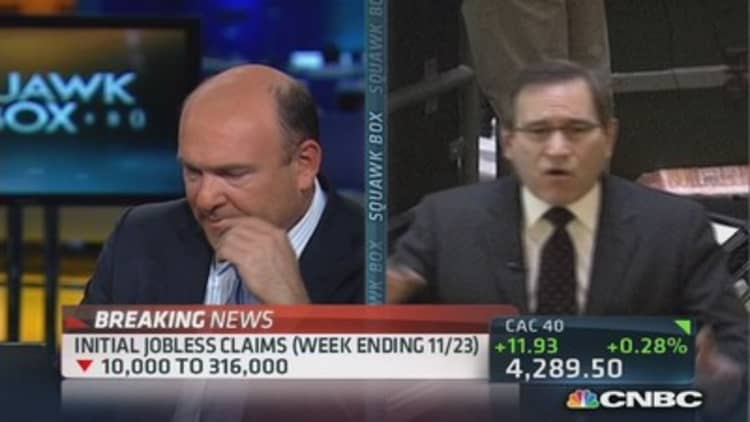
A gauge of planned U.S. business spending on capital goods unexpectedly fell in October and new orders for long-lasting manufactured goods were down, pointing to a loss of momentum in factory activity.
Meanwhile, the number of Americans filing new claims for unemployment benefits unexpectedly fell last week, offering signs of a steady improvement in the labor market.
The Commerce Department said on Wednesday non-defense capital goods orders excluding aircraft, a closely watched proxy for business spending plans, dropped 1.2 percent last month. It was the second month of declines after orders for these so-called core capital goods fell 1.4 percent in September.
Economists polled by Reuters had expected this category to increase 0.6 percent.
The unexpected drop in these orders suggested some ebbing in the manufacturing sector's recently found strength. It could also be an indication that a 16-day partial government shutdown last month hurt business confidence.
Orders for durable goods - items from toasters to aircraft that are meant to last at least three years - fell 2 percent, largely because demand for civilian and defense aircraft tumbled. Durable goods orders had increased 4.1 percent in September.
The tone of the report was generally mixed, with gains in new orders for primary metals, computer and electronic products, motor vehicles and electrical equipment, appliances and components.
Jobless claims surprise
Initial claims for state unemployment benefits fell 10,000 to a seasonally adjusted 316,000, the Labor Department said on Wednesday. Claims for the prior week were revised to show 3,000 more applications received than previously reported.
Economists polled by Reuters had expected first-time applications to rise to 330,000 last week. The four-week moving average for new claims, which irons out week-to-week volatility, slipped 7,500 to 331,750.
A Labor Department analyst said no states had been estimated and there were no special factors influencing the report. However, he noted that adjusting the data for seasonal fluctuations around this time of the year remained a challenge.

While layoffs have slowed significantly, that has not been matched with a rapid acceleration in hiring as domestic demand remains lukewarm.
The claims report showed the number of people still receiving benefits under regular state programs after an initial week of aid fell 91,000 to 2.78 million in the week ended Nov. 16. That was the lowest level since January 2008.
The so-called continuing claims data covered the household survey week from which the November unemployment rate will be calculated. Continuing claims fell 74,000 between the October and November survey periods, suggesting some improvement in the jobless rate after it rose to 7.3 percent in October.
The insured unemployment rate fell to 2.1 percent from 2.2 percent, the lowest since September.
--By Reuters

